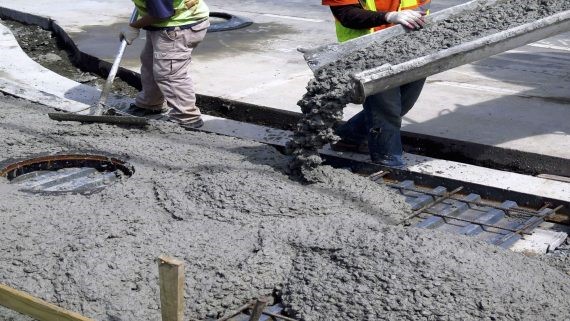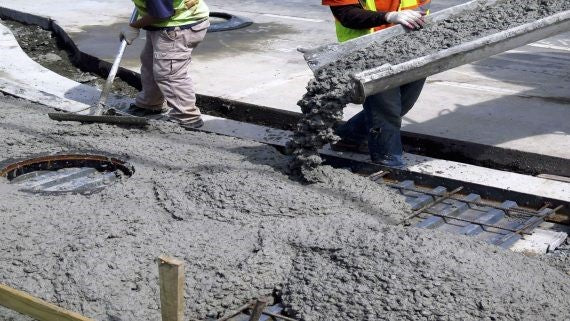In civil engineering projects, concrete is often used for construction and renovation work. However, delays are common in construction projects because concrete requires a slow curing time, which is necessary for safe and long-lasting results. Concrete accelerators are an effective and efficient solution to this problem and can drastically reduce curing times without compromising safety and performance.
In this blog article, we explore the many benefits of concrete accelerators and discuss the considerations civil engineers should make when selecting this construction material.
What is concrete accelerator?
Concrete accelerator additive is also called cement accelerator, accelerator additive, etc. Although there are different names, the faction is the same.
An additive to concrete, mortar, plaster or screed is a concrete accelerator. Using an accelerant reduces the setting time, allowing healing to begin sooner.
This reduces the risk of frost damage during winter concreting. If the concrete does not reach a strength of 3.4 MPa before freezing, damage will occur.
According to current studies, tricalcium oxysilicate (C 3 The main cause of setting and/or rapid hardening is S hydration and the subsequent production of calcium silicate hydrate (CSH).
Normal concrete accelerators play an important role in certain technical constructions. There are two main types of concrete accelerators.
Chloride-free accelerators
Chemicals commonly used in chloride-free accelerators include nitrates, nitrites, thiocyanates, formates, and alkanolamines.
Chloride-based accelerator
Calcium chlorides and alkaline chlorides are the main types of chloride-based accelerators. Increasing the chloride content in concrete by adding the accelerator leads to a reduction in the hydration heat release time.
Calcium chloride-based accelerators accelerate concrete formation more efficiently and are cheaper than concrete accelerators without calcium chloride.
Important information about concrete accelerators
Accelerators are often used in modern construction because they can reduce setting time and/or increase the initial strength of shotcrete and regular concrete. Unlike shotcrete, accelerators for normal concrete must have a minimum setting time so that there is sufficient time for concreting. According to the European standard EN 934-2: 2009+A1: 2012, this time must not be less than 30 minutes.
Although chloride-based accelerators can effectively accelerate the setting and hardening of Portland cement, their use in steel-reinforced concrete is not recommended due to potential steel corrosion problems.
For this reason, chloride-free accelerators are still commonly used in normal concrete, despite their relatively high price.


Use of concrete accelerators
There are many benefits to using concrete accelerators in construction projects. Firstly, concrete accelerators can drastically reduce curing times. This is particularly beneficial for projects with tight deadlines, as it can mean the difference between meeting deadlines and costly delays.
Furthermore, concrete accelerators can also improve the strength and quality of the final product. By reducing curing times, concrete accelerators allow for a stronger bond between cement and aggregate, resulting in a stronger, more durable final product.
- Concrete repair work
If it needs to be used or charged immediately after construction, we use accelerators for initial strength. For example, when passing by, we may need to open it as quickly as possible. In this case, an accelerator could be a solution.
- New building
If the structure needs to be completed as soon as possible, a concrete accelerator can be used. For example, if we need to concrete a floor every week, sufficient strength development is necessary.
In general, concrete is expected to be compressive strength (design strength – characteristic compressive strength) in 28 days. However, in special cases early resistance may be necessary. For these purposes we can use the accelerator.
Considerations before use
Although concrete accelerators offer many benefits, there are some considerations we must make before using them on a project.
Firstly, it is important to choose a concrete accelerator that is compatible with the other materials used. This ensures that the accelerator does not negatively impact the performance of the finished product.
Furthermore, we must consider the cost of the accelerator and see if the investment is worth it. In some cases, the benefits provided by the accelerator may outweigh the costs.
However, in other cases, the use of an accelerator may not be necessary and may be omitted in favor of a more economical solution.
Concrete is a construction material made by mixing cement, aggregates and water. Concrete hardens slowly, which can often cause delays in construction projects. However, the use of concrete accelerators can significantly reduce concrete curing time without compromising safety or performance. In this blog article, we will explore the many benefits of concrete accelerators and the considerations civil engineers should make when selecting this construction material.

